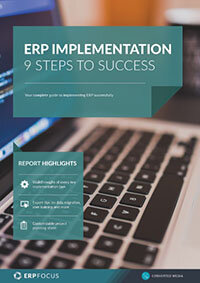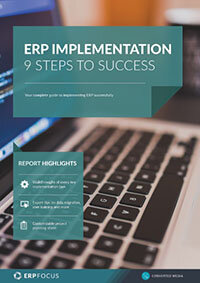3 surprisingly common ERP change management mistakes
ERP change management processes can be the saviour of your project or its undoing. But despite the importance of these processes, many ERP projects continue to make the same change management mistakes.
1. Failure to integrate ERP ssers into the project team
ERP is run by users throughout the enterprise. Someone in accounting posts the customer billing to accounts receivable. Another person in production records how many units were completed yesterday afternoon. If every one of these individuals has not adopted the new ERP, there is a high risk of failure. Before the project even begins, your ERP change management program should make every user feels like they are part of the overall ERP team.
Recommended Reading: ERP Implementation - Ensure your new system is implemented successfully
Listen to what your users say during ERP testing. When a user highlights the fact that the process defined in the ERP implementation is not what they usually do, pay attention. Help them understand just how the ERP will make their lives and jobs easier and make them more productive. Assure them they will not lose their job when the company is able to run so much more efficiently. Give them the training they need.
2. Staffing the ERP implementation team with "B" players
The company has to continue operating during ERP implementation. The best people need to be working on their jobs securing new orders and ensuring the supply chain works. Staffing the ERP implementation team with junior personnel and hoping some of them will elevate their games and become self-starters is wishful thinking.
Before the project even begins, make sure every user feels like they are part of the overall ERP team.
Certainly it is true that we need to keep a balance, the business does have to go on. But ERP is a tool you selected to help make the business be what it needs to be in the future. For ERP change management to be successful, you want your top players on the building team. Think about it; if you can’t trust your business to go on without your A players, maybe it is time to go hire a few more of them.
3. Failure to discontinue legacy systems
Legacy systems can be seen as a safety net during ERP implementation, but keep that net in place too long, and it will have a negative impact on your ERP change management efforts. If you don’t pull the plug on your old ERP, somebody will continue to use it. You might realize this when there are two different sales totals and people defend each one as the accurate and correct value.
Keeping an old ERP on life support might not be common, But what about other applications? Maybe you didn’t like the warehouse management system that came with your new ERP and weren’t ready to buy the expensive bolt-on WMS application from another vendor. Now you have your old WMS and you find you need to enter data into it in parallel with ERP data entry. The ERP says an item is in inventory and the WMS should tell you WHERE to find it. These applications need to be integrated. A workaround just won’t cut it. Hoping the applications work together will not be adequate.
Free white paper

ERP Implementation: 9 steps to success
The 9 proven steps you should follow when implementing ERP

Related articles
-

A beginner’s guide to ERP integration
What is ERP integration, why it matters, and more!
-

CMMC Compliance: What Aerospace and Defense Manufacturers Need to Know
Key insights on CMMC compliance, deadlines, and securing DoD contracts with CMMC 2.0 certificatio...
-

When is it time to replace a legacy ERP system?
Replacing your legacy ERP system with new software can revitalize your business operations.

